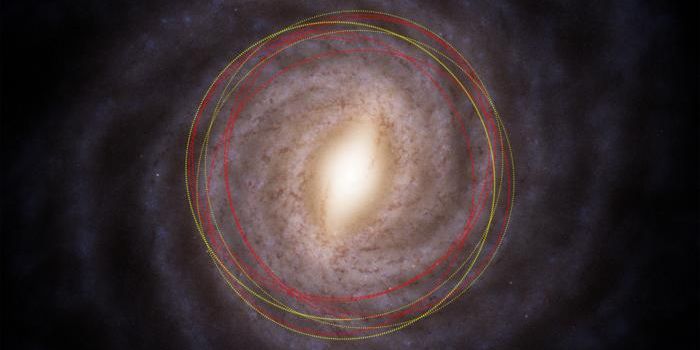NASA Has Officially Named its Upcoming Europa Mission
Europa, the smallest of the four Galilean moons in orbit around Jupiter, is a huge place of interest for scientists because of the belief that just below the rocky-looking surface is a vast sub-surface ocean of briny water.
Image Credit: NASA/JPL-Caltech/SETI Institute
The sub-surface ocean theory originally came about after the Hubble Space Telescope noticed plumes of water spewing from the surface in the form of geysers. This gave way to theories suggesting that perhaps the water was under pressure below the surface and was being ejected.
Whether or not such a sub-surface ocean might support any life forms continues to be a question scientists haven’t answered yet, but by way of a future probe mission, NASA wants to answer that question once and for all.
A recent bill passed unanimously by Congress proposes giving NASA the funding they need for such a mission, and while the space agency has certainly been excited about that, they haven’t yet come up with a name for such a mission, until now.
A statement from NASA earlier this month notes that the probe mission will be called “Europa Clipper,” which has reportedly been chosen in honor of 19th century clipper ships that were well known for being swift and transporting goods back and forth between continents.
While Europa Clipper won’t be shipping goods between Earth and Europa, it will be beaming information back to us at incredibly fast speeds and it will gracefully sail through space over to the moon, just as clipper ships did in our Earthly oceans.
Among the vast types of information it’ll send back are high-resolution photographs of the surface of Europa, which will be captured as the probe swings past the moon on a bi-weekly basis.
"During each orbit, the spacecraft spends only a short time within the challenging radiation environment near Europa. It speeds past, gathers a huge amount of science data, then sails on out of there," said Robert Pappalardo, Europa Clipper project scientist at NASA's Jet Propulsion Laboratory in Pasadena, California.
Despite having an official name, the mission is still far off into the future. It’s expected to launch sometime in the 2020’s, which means it probably won’t arrive at the Jovian system until closer to 2025.
It should be very interesting to see what can be found when the mission finally does launch.
Source: NASA









